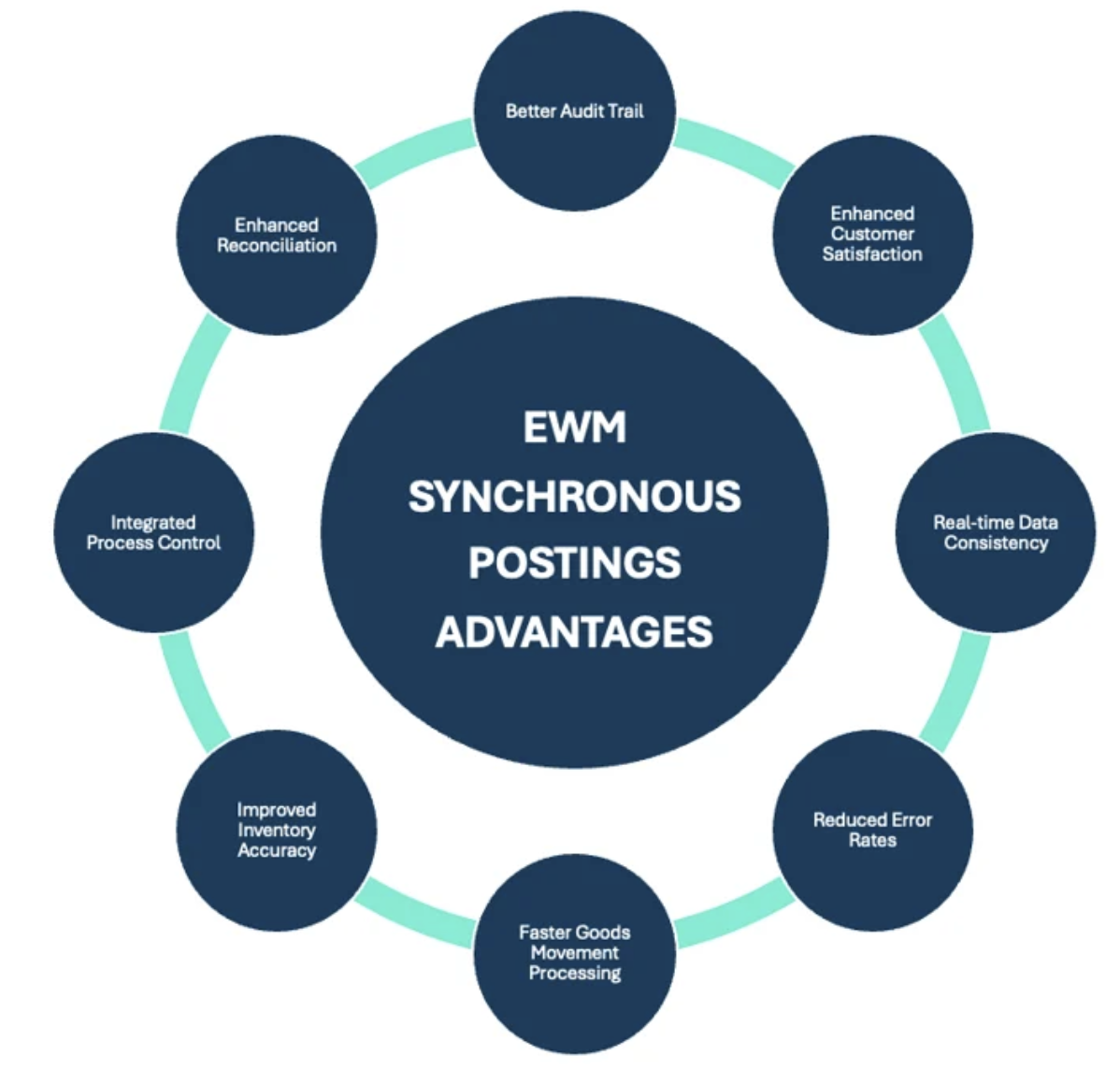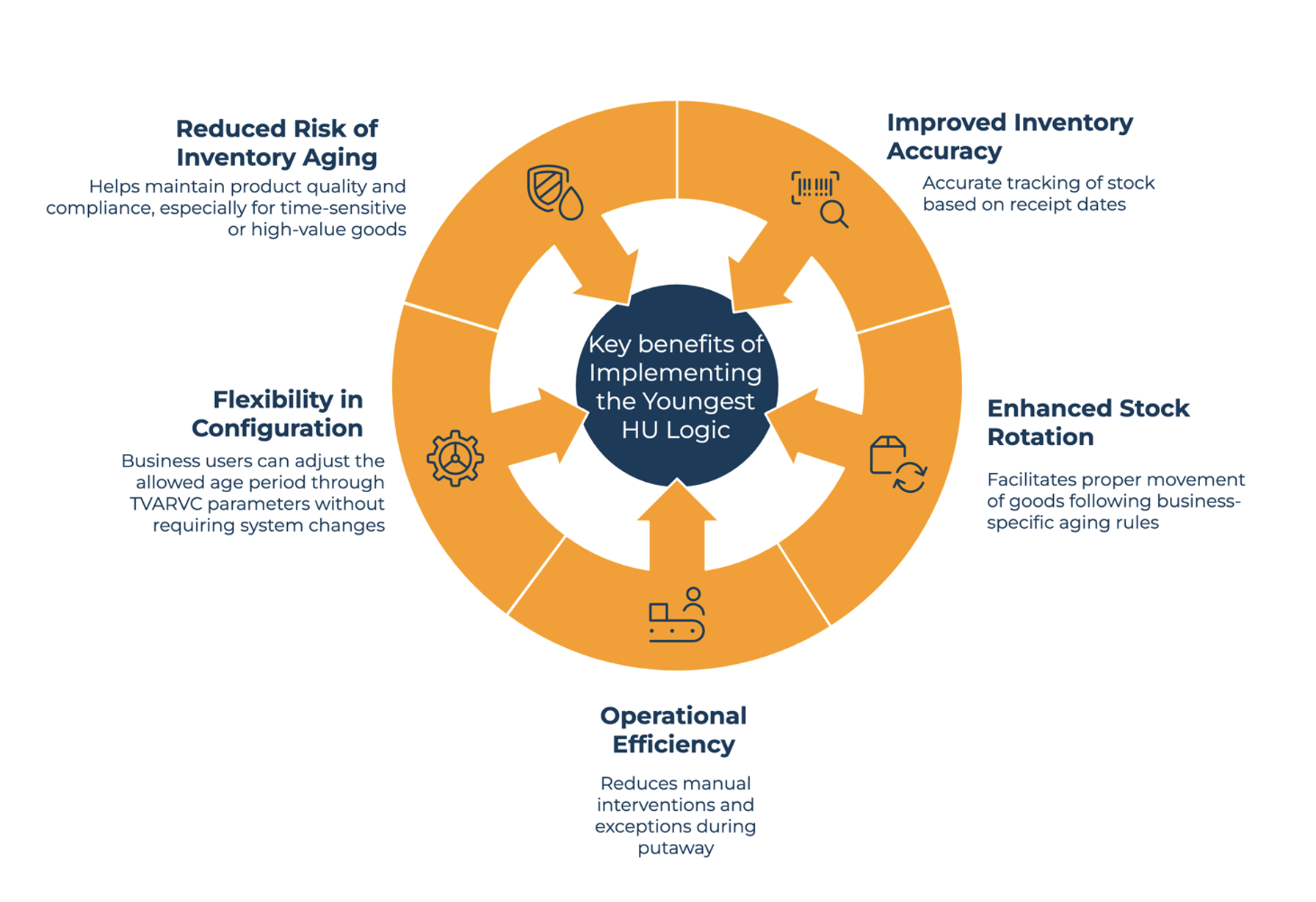1 min read
Synchronous Goods Posting in SAP EWM: Real-Time Integration with Inventory Management
 Deepali Shukla
:
Jun 16, 2025 11:19:06 AM
Deepali Shukla
:
Jun 16, 2025 11:19:06 AM

Synchronous Goods Posting in SAP EWM: Real-Time Integration with Inventory Management
In modern logistics environments, real-time inventory accuracy is critical. Traditional EWM processes often involve asynchronous goods movement, where a delay exists between the warehouse activity (like picking or goods receipt) and the corresponding financial posting in SAP Inventory Management (IM). This can lead to mismatches, delays in reporting, and process inefficiencies.
With Synchronous Goods Posting in SAP EWM, organizations can bridge this gap, ensuring that goods movements in the warehouse and financial postings happen together, instantly.
Benefits of Synchronous Posting

What are Synchronous Postings in SAP EWM?
Synchronous postings refer to real-time, simultaneous updates between SAP EWM and SAP ERP (or S/4HANA). When a transaction occurs in EWM, like goods issue, goods receipt, or posting changes, a synchronous posting immediately triggers the corresponding document in the ERP system.
For example:
- A goods issue in ERP simultaneously creates a material document in ERP and a warehouse task in EWM.

- A posting change in EWM (e.g., from block to unrestricted) updates the stock type in ERP at the same time.

- A goods receipt in ERP simultaneously creates a material document in ERP and a warehouse task in EWM.

This real-time communication ensures data consistency, reduces lag, and can help avoid mismatches between warehouse operations and financial/accounting records.
Material Document details

Synchronous vs. Asynchronous Postings

When Should You Use Synchronous Postings?
Synchronous postings are ideal for:
- High-value or regulated stock movements (e.g., pharmaceuticals).
- Business-critical operations where inventory accuracy is paramount.
- Situations requiring tight coordination between warehouse and financial systems.
They might not be ideal for:
- High-volume automated processes where performance is a concern.
- Scenarios where network or system latency can interrupt posting processes.
Common Best Practices
1. Monitor Performance: Synchronous postings add processing time, so evaluate the load on your system.
2. Implement Robust Error Handling: Any failure in ERP can block warehouse activities.
3. Test Integration Thoroughly: Ensure all relevant BADI implementations and function modules are stable.
4. Use Selectively: Don’t go synchronous just because it’s real-time—evaluate the business need.
Final Thoughts
Synchronous postings in SAP EWM can be a game changer for organizations seeking real-time accuracy and tightly integrated operations. When used wisely, they enhance transparency, reduce errors, and speed up critical processes. But, as with any powerful tool, they should be implemented with care and consideration of the broader system architecture.
Thinking of implementing synchronous postings in your EWM setup? Let’s discuss how to tailor it to your business needs.
.png)
Pricing Procedure in MM with Discount, Surcharges, and Taxes

5 min read
Putaway Based on GR Date and Time (Youngest HU Logic) in SAP EWM

11 min read
EWM-PP Integration: Consumption Options in S/4HANA Across Cloud & On-Prem
EWM-PP integration and various consumption options in S/4HANA with SAP Public/ Private Cloud / On-Premises

5 min read

.png)
.png)